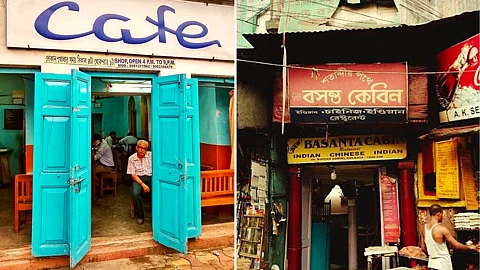
- HOMEGROWN WORLD
- #HGCREATORS
- #HGEXPLORE
- #HGVOICES
- #HGSHOP
- CAREERS
- ABOUT US
- CONTACT US

Upon encountering a cabin restaurant for the first time, one is immediately struck by its aura of secrecy. Over the course of history, these unique restaurants have served as gathering spots for an array of social groups. Within their walls, they have held secret meetings for political conspiracies, played host to romantic encounters, and provided a haven for women seeking privacy. Among Kolkata’s many culinary treasures, cabin restaurants stand out as a peculiar yet integral part of the city's culture.
The origins of cabin restaurants can be traced back to the early 1800s when these small eateries began sprouting across the city. They provided an opportunity for the common man to experience the pleasure of eating out, which was not always possible within the confines of their homes. These establishments, known as ka-beens in Bengali, featured partitions made of plywood and offered a sense of privacy to their vistors. The name "cabin" itself comes from the floor plan, where wooden cubicles were divided by curtains or saloon-style doors. These restaurants have a rustic charm with their casual and decent seating arrangements. The infrastructure reflects the essence of old architecture, showcasing their enduring heritage.
Romance and Privacy
During the early 1960s, cabin restaurants played a vital role in shaping Kolkata's dating scene, offering couples a place of solitude for their meals. Additionally, these establishments provided an unprecedented opportunity for women from conservative backgrounds to dine out while safeguarding their privacy and promoting urban dining. The partitioned tables and drawn curtains allowed women to relish their meals with loved ones shielded from the public's gaze. Cabin restaurants became sanctuaries for people seeking privacy.
Social Movements and Political Conspiracies
Cabin restaurants not only served as romantic hideaways but also played a role in India's struggle for independence. Many of these establishments, particularly those situated near educational institutions, became gathering spots for college students actively involved in the freedom movement. The privacy afforded by the closed cabins enabled these students to plan and strategise against the British. These iconic cabins even offered refuge to renowned figures of the freedom movement, including Prafulla Chandra Ray, Surya Sen, and Netaji Subhas Chandra Bose. In subsequent years, cabin restaurants continued to serve as meeting places for student activists associated with the Naxalite movement, solidifying their place in Kolkata's historical narrative.
An Enduring Legacy
With the advent of liberalisation, the concept of cabin restaurants has undergone changes. While the names and nostalgic elements remain, many cabin restaurants have transformed into open-screen eateries. Rising expenses and the need for economic viability have forced owners to modify their operations. Long hours of customers lingering over cups of tea and toast have become less sustainable, leading to expanded menus and adapt their operations and expand their menus. However, despite these challenges, the enduring nostalgia and the quality of food continue to attract customers to these iconic establishments.
Certain cabin restaurants, such as Mitra Café, Favourite Cabin, Fern Restaurant, Anadi Cabin, and Dhiren Cafe, have truly stood the test of time, maintaining their presence for over a century. These remarkable eateries have distinguished themselves by offering a delightful blend of Indian and European cuisines, thoughtfully adjusted to suit the local palate. From the ever-popular kabiraji cutlet to mouthwatering mughlai dishes, parathas, stewed deep-fried chops, and comforting toast with butter, these cabin restaurants have catered to a diverse range of culinary preferences with their economical prices.
Today, while the physical cabins may have diminished, the essence of these restaurants remains intact. Within their doors, these cabin restaurants continue to provide an experience that goes beyond food, inviting vistors to relish the ambiance, the people, and the conversations that have shaped Kolkata's cultural heritage.
If you enjoyed reading this, here's more from Homegrown:
Power, Poverty & People: Kolkata’s History From 1880 to 1971 In Pictures
What’s In Nizam’s Kolkata Kathi Roll? Finding History In A Flatbread
What's In A Name? : The History Of Some Of Kolkata's Most Iconic Street Names
